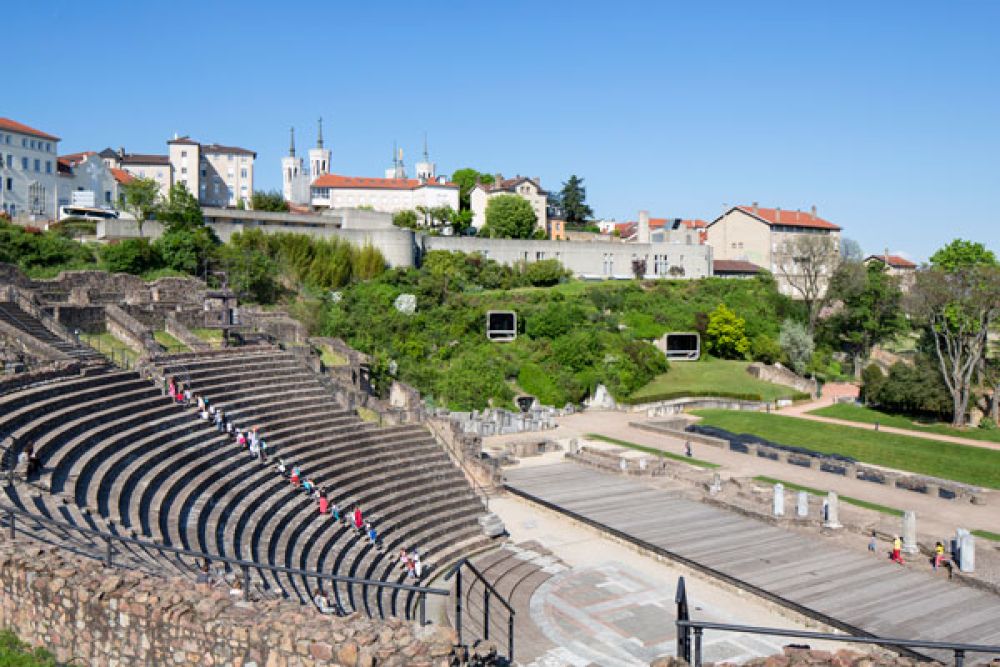

Lyon, a city with deep historical roots in the Rhône-Alpes region of France, is famously known for its rich past and cultural heritage. At the heart of this legacy is Fourvière Hill, often referred to as the "hill that prays" due to its religious significance and the presence of the iconic Basilica of Notre-Dame de Fourvière. Commanding the city's skyline, the hill has been a focal point for pilgrimages and tourism, offering panoramic views of Lyon below.
Fourvière's history is vast; it was the location of the Roman city of Lugdunum, founded in 43 BC, which later became the birthplace of Lyon. The remains of this ancient city can still be seen today, particularly in the form of the remarkable Roman Theatres—ancient sites that have been a magnet for history enthusiasts and tourists alike.
The Roman Theatres of Lyon are considered to be some of the oldest in France, with the Grand Theatre dating back to 15 BC. This theatre could originally seat up to 10,000 spectators, showcasing the grandeur of Roman architectural expertise. Adjacent to it lies the smaller Odeon, which was primarily used for musical performances and public readings. These sites hold immense archaeological significance, and walks through their ruins offer a step back into the time of the Romans.
Tourism at Fourvière Hill and the Roman Theatres has been a steady attraction for centuries, burgeoning primarily as a religious pilgrimage site. However, it was the development of Lyon as a cultural and gastronomic centre that marked the hill's broader appeal to tourists. Recognition of Lyon's historical significance, including the Roman Theatres, was solidified when UNESCO designated large parts of the city a World Heritage Site in 1998, thereby enhancing its global profile.
Interactive and immersive experiences have become a forefront of modern tourism in historic sites. At Fourvière Hill and the Roman Theatres, this can be seen in the augmented reality applications that allow visitors to visualize the past splendor of these ruins. The annual Nuits de Fourvière festival leverages the historic backdrop of the ancient theatres for contemporary theatre, dance, music and film performances, attracting a diverse international audience.
Sustainable tourism is another contemporary trend, with initiatives to minimize the environmental impact by encouraging public transportation and walking tours. Moreover, themed tours that focus on both the culinary delights of Lyon and its historical treasures have seen an uptick, reflecting the merging interests of culture and gastronomy among tourists.
It is recommended to plan the visit to Fourvière Hill and the Roman Theatres around the spring to autumn months when weather conditions are most suitable for exploration. Guided tours are available to provide in-depth historical knowledge and context. Given the hill's panoramic views of Lyon and the architectural marvels of the Roman Theatres, the visit leaves an indelible mark on tourists, showcasing the profound narrative of Lyon’s historical journey through the ages.